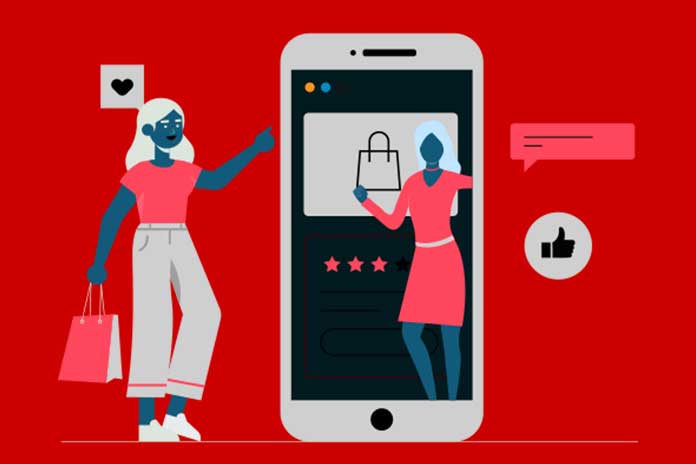Since the health crisis, many brands have experimented with the potential of “shoppertainment”, a concept combining online shopping and entertainment. Live shopping offers the possibility of recreating the link between consumers and brands in e-commerce by strengthening the customer relationship. Live shopping – launched in 2016 on Alibaba’s Singles’ Day (Singles’ Day, November 11) – already represents 10% of the e-commerce volume. This market recorded annual growth of 121.5% in 2021 to reach 154 billion dollars.
Live shopping is the fusion of home shopping, social networks, entertainment and finally reality TV.” The development of live shopping has benefited from the Covid and closures with the closure of some so-called “non-essential” stores. Consumers have been buying more online since the health crisis. October 2021, the Fnac Darty group – a pioneer on the market – organizes its first session for the launch of Microsoft’s new Xbox, broadcast on the merchant sites of the two brands and the social network Twitch. Live shopping brings together more than 5,500 people. The tech giants have also gotten into it: Instagram, Facebook, Pinterest, Amazon.
Recreate A Link Between The Consumer And The Brand In The E-Commerce
“Live shopping is duplicated on very different types of products. This movement convinces all the brands because it makes it possible to recreate a link between the consumer and the brand in e-commerce. It brings to life the advice of a product sheet. The novelty lies in the interaction, the possibility of asking questions directly.” 67% of people say they are interested in this new form of online commerce. The three qualities put forward are trust (attending a live demonstration of a product), prices and the possibility of making purchases instantly.
This mode of sale seems to appeal particularly to young women under 25 years of age. 52% of them are interested in it, and 49% think they will use it in the next six months. Consumers’ expectation of “shoppertainment” (a concept combining online shopping and entertainment) is higher around specific product categories, particularly electronics, fashion and cosmetics. “We design our life like TV shows on distributors’ sites.
On some of them, we achieved more than 200,000 euros in turnover in 60 minutes, particularly in the high-tech sector. “Live shopping allows you to be reassured with the participation of a brand ambassador and often an influencer in line with the target. The objective remains to boost sales by creating a feeling of urgency and, therefore, an emotional dimension. Depending on the products, Replay is often a strong driver of transformation.
Find The Advertising And Commercial Martingale
If the conversion rates in e-commerce remain low, between 1 and 3% on average, they oscillate between 15 and 35% in live shopping. “Customers do not just buy an item with live shopping. We build storytelling that is both educational and entertaining around the products. This creates a very qualitative setting with a superior basket medium. This new purchase form does not supplant either in-store advice or traditional e-commerce but becomes a new element of the customer relationship. “The distributor experimented with it this fall during two sessions: the new cashmere collection (iconic of the brand) and the wine fair.
Three other live shopping events were carried out at the end of the year, with an average of one per month. For its part, Carrefour tested it in November 2020 opportunistically, due to the closure of non-essential departments in the middle of the pre-Christmas period, on the toy activity. “We immediately set up a very aggressive logic in terms of live, non-food e-commerce director of the brand (since April). The objective was to understand this new way of marketing products and to be able to reduce our learning curve.” About thirty live shows were offered on Carrefour’s various sites and social networks. “This multiplicity allows us to test several mechanisms (promotional, contest, by calling or not on known influencers, etc.), but above all to be able to experiment with different categories of products”.
Themes as distant as childcare, travel, and the wine fair, through gaming or technical products, find the martingale both advertising and commercial. Some live shopping aims to obtain immediate ROI. Others are purely for marketing, advertising, branding… “We achieved our best commercial and traffic performance on gaming activities, a young and very digital clientele, as well as live cooking, ” notes Carrefour’s non-food e-commerce director. The wine fair, a commercial highlight, enabled us to record turnover and transformation. Several hundred thousand euros were generated based on 50,000 viewers.”
A Business Practice Still Little Known
The promotional offer during life remains the first lever of transformation. Specific promotions stop a few hours after the event (usually at midnight). Nevertheless, although brands and e-merchants are developing this commercial system regularly, 87% of people say they have never heard of this mode of purchase. Only 3% have used it and 6% for Generation Z (young people under 25).
“When we started live shopping last March, we were ready to do it almost every day. We quickly noticed that the market was not mature enough for this frequency, nor from a technological point of view. We have to call external companies to include the live shopping brick in the e-commerce platform. Integrating payment remains a headache, the same for audio. These issues do not exist on Asian platforms.”


